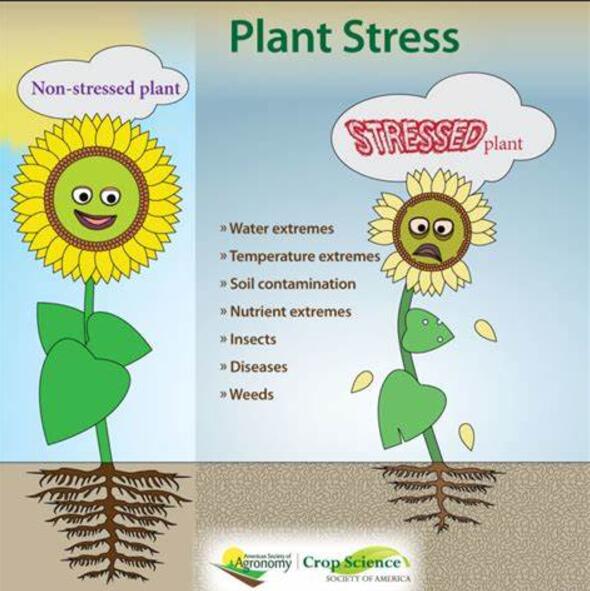Plant quantum biology: The quantum dimension of plant responses to stress
IF 6.8
Q1 PLANT SCIENCES
引用次数: 0
Abstract
The intricate interplay of quantum coherence, entanglement, radical pair mechanisms, and tunneling, suggests that plants operate at a level of sophistication beyond classical expectations. The potential to harness these quantum principles for agricultural innovation and environmental sustainability is immense. This review provides a comprehensive overview of plant quantum biology, extending beyond photosynthesis and magnetosensitivity the exploration of enzyme catalysis and stress responses. The quantum coherence and entanglement in photosynthetic light harvesting and energy transfer, examining their role in efficient energy transduction is evaluated. Plant magnetosensitivity, mediated by cryptochromes and iron–sulfur clusters, is discussed as a potential quantum sensing mechanism. The radical pair mechanism influence on plant growth, development, and circadian rhythms via magnetic field perception is analyzed. Quantum tunnelling impact on enzyme reaction rates and substrate specificity is also discussed. The critical intersection of quantum biology and plant stress responses, encompassing light, oxidative stress, temperature, and biotic stress, is examined. How quantum effects might modulate these responses, offering opportunities for developing stress-tolerant crops reveal that challenges posed by biological complexity, transient quantum phenomena, and experimental limitations, along the need for robust theoretical models are future trends in plant stress biology. Future research should focus on manipulating quantum effects in vivo, bridging fundamental science and agricultural applications for enhanced sustainability.

植物量子生物学:植物对逆境反应的量子维度
量子相干、纠缠、自由基对机制和隧道作用的复杂相互作用表明,植物的运作水平超出了传统的预期。利用这些量子原理进行农业创新和环境可持续性的潜力是巨大的。本文综述了植物量子生物学的全面概述,扩展到光合作用和磁敏感性以外的酶催化和胁迫反应的探索。本文评价了光合作用光收集和能量传递中的量子相干和纠缠,并研究了它们在有效能量转导中的作用。植物磁敏是一种潜在的量子传感机制,由隐色素和铁硫团簇介导。分析了自由基对通过磁场感知影响植物生长发育和昼夜节律的机制。量子隧道效应对酶反应速率和底物特异性的影响也进行了讨论。量子生物学和植物应激反应的关键交集,包括光,氧化应激,温度和生物应激,被检查。量子效应如何调节这些反应,为开发耐胁迫作物提供了机会,揭示了生物复杂性、瞬态量子现象和实验限制带来的挑战,以及对强大理论模型的需求是植物胁迫生物学的未来趋势。未来的研究应侧重于在体内操纵量子效应,将基础科学与农业应用联系起来,以提高可持续性。
本文章由计算机程序翻译,如有差异,请以英文原文为准。
求助全文
约1分钟内获得全文
求助全文
来源期刊

Plant Stress
PLANT SCIENCES-
CiteScore
5.20
自引率
8.00%
发文量
76
审稿时长
63 days
期刊介绍:
The journal Plant Stress deals with plant (or other photoautotrophs, such as algae, cyanobacteria and lichens) responses to abiotic and biotic stress factors that can result in limited growth and productivity. Such responses can be analyzed and described at a physiological, biochemical and molecular level. Experimental approaches/technologies aiming to improve growth and productivity with a potential for downstream validation under stress conditions will also be considered. Both fundamental and applied research manuscripts are welcome, provided that clear mechanistic hypotheses are made and descriptive approaches are avoided. In addition, high-quality review articles will also be considered, provided they follow a critical approach and stimulate thought for future research avenues.
Plant Stress welcomes high-quality manuscripts related (but not limited) to interactions between plants and:
Lack of water (drought) and excess (flooding),
Salinity stress,
Elevated temperature and/or low temperature (chilling and freezing),
Hypoxia and/or anoxia,
Mineral nutrient excess and/or deficiency,
Heavy metals and/or metalloids,
Plant priming (chemical, biological, physiological, nanomaterial, biostimulant) approaches for improved stress protection,
Viral, phytoplasma, bacterial and fungal plant-pathogen interactions.
The journal welcomes basic and applied research articles, as well as review articles and short communications. All submitted manuscripts will be subject to a thorough peer-reviewing process.
 求助内容:
求助内容: 应助结果提醒方式:
应助结果提醒方式:


